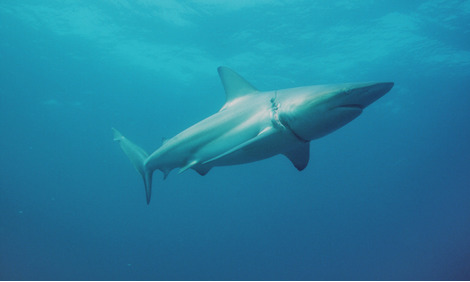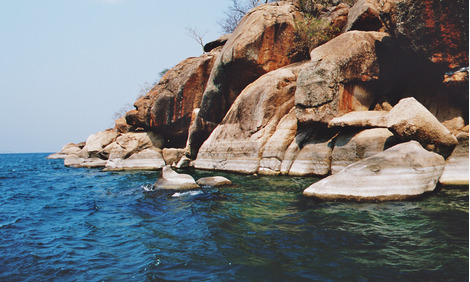From 7.09.06 until 23.09.06 the JBL Research team traveled to Africa with interested specialists from Germany, Holland, South Africa and Switzerland.
The program focused on aquaristic research and the shark school from SharkProject and Dr. Erich Ritter. After an 11-hour flight from Frankfurt to Johannesburg with South African Airways, the journey continued to Durban, where dives were carried out on the southernmost tip of the coral reefs of the Indian Ocean. Diving sites at Aliwal Shoal and Protea Banks and were visited. The participants were fascinated by a crocodile farm near Umkomaas and the UShaka Aquarium in Durban.
The world-renowned shark specialists, Andy Cobb and Dr. Erich Ritter, lectured on interaction with sharks and prepared the JBL team for their encounters with sharks.
The team traveled by hire car to the Hluhluwe-Umfolozi Nature Reserve northwest of Durban. Accommodation was a tent camp inside the park. The team had the opportunity of exploring the bush on foot, accompanied by a ranger, and spotting terrarium animals.
The trip continued to Cape Town via Durban and then on to Hermanus on the coast, where southern right and humpback whales can be observed near the coast in September. The team took part in a whale watching tour in Gansbaai to observe these peaceful marine mammals at first hand.
The team then continued to the neighboring region of Kleinbaai where Andrè Hartmann, the white shark expert, was waiting. Together with Brian Mc Farlane and André the team drove on to the world-famous Shark Alley between Dyer Island and Geysor Rock to observe white sharks both above and below the water and to learn about their behavior.
For two days the team had the opportunity of traveling out to the white sharks and experiencing these creatures in the water. With a water temperature of only 15°C, this was a pretty cool experience.
Using light aircraft, the team members flew over the region from Gansbaai to Hermanus, observing the area from the air. The views of the whales and great white shark from the air were a unique experience.
After driving by car for several hours in the direction of the Cape of Good Hope, the group arrived at the famous Boulders Beach, near Simonstown, the home of a very large colony of penguins. Dives were carried out here to observe the biodiversity of this almost Antarctic region, where Atlantic waters meet the Indian Ocean.
The South African part of the trip concluded with an appointment with the 2-Oceans Aquarium where the participants were allowed a glimpse of the technology behind the scenes and were able to dive with the sand tiger sharks in the 7 meter deep predator tank. As aquarium keepers it was a whole new experience for us to be inside the aquarium, looking out at the visitors through the glass.
Two more flights brought the team via Johannesburg to Lilongwe on Lake Malawi.. The destination was the camp of Stuart Grant, whose fish-catching station is world-renowned. Accompanied by the Lake Malawi expert, Ralf Keter from Berlin, the team made trips in the Cape Mc Lear area. In the course of the many dives, the lake fish were observed and the biotope analyzed. After 5 days at Lake Malawi the team had to head home to Frankfurt.







